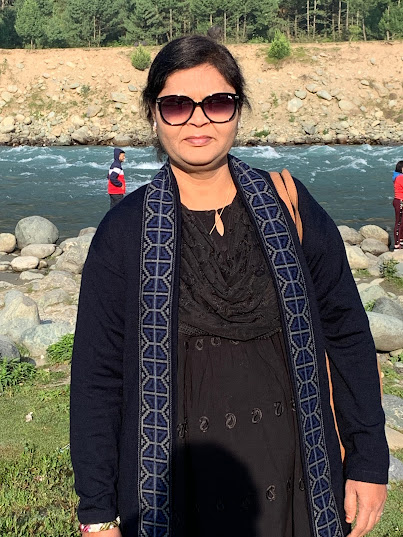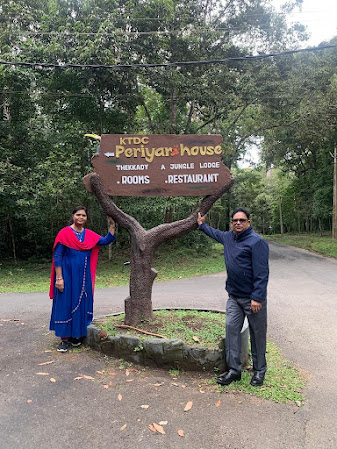Popularly
known as the "Paradise on the Earth" the state is world famous for
its scenic splendour, snow-capped mountains, plentiful wildlife, exquisite
monuments, hospitable people and local handicraft.
Jammu, Kashmir and Ladakh and all
three have immense potential for tourism
from both domestic as well as international tourists. There are number of
locations which are untapped and can be developed as major tourist
destinations, having all the natural as
well as the cultural resources for attracting tourists. Some of the important
natural resources are excellent climate,
beautiful lakes, locations for adventure sports, wild life, trout fish, natural
and manmade parks like Shalimar and
Nishat of the Mughal period, flora and fauna, alpine forests, natural waterfalls and streams etc. As for the
cultural resources, the state has some of the most important religious shrines of Hindus, historical
monuments, plethora of local festivals, distinct cuisine, craftsmanship skills for intricate and fine
woodwork, woolens, carpets, textiles, inlay work, paper mache etc.,
Gulmarg is recognized as one of the top 10 Sky destinations of the World. Host to many of Bollywood shootings of yesteryears, this place is attracting numerous tourists once again.
It is mostly between October to December that areas like Sonamarg and Gulmarg start to receive heavy snowfall. So you should have the following items or even you can hire :
- Thermal wears
- Heavy windproof and warm Jacket.
- Woolen Cap to cover your head and neck and possibly face as well / Monkey Cap.
- Heavy Woolen Clothing.
- Umbrella and Jackets
- Woolen Socks.
- Warm & Waterproof Gloves.
- Shoes with good grip.
- Sunglasses
- Hand Gloves.
Due to popularity
of cable ride in Gulmarg, advance booking of Gondola tickets is highly
recommended. This ensures you have a reserved seat when boarding and avoids the
disappointment of waiting in long lines or being turned down on the day of your
visit.
Gondola cable car
ride takes place in two Phases :
Phase I: from the
Gulmarg resort to Kongdori Station (2600 m) in the bowl-shaped Kongdori Valley
which takes 9 minutes to reach.
Phase II: from
Kongdori Station to Kongdori Mountain (3747 m), the shoulder of Apharwat Peak
which takes 12 minutes
After
Phase-II, when you get down, you will get so many local people to persuade you and ask you to hire their services to reach at the top of Ice Area. Old snow or ice is very slippery. be careful of accidental falling.
Gulmarg is one of the most popular skiing destinations in Jammu and Kashmir. During winter, the whole region gets covered by a thick blanket of snow, making it an ideal spot for snow lovers and winter adventure activities. With the gondola ride, you can reach the perfect skiing slopes in the region and engage in thrilling winter adventures. The Gulmarg Gondola remains operational throughout the year and is an ideal recreational activity at any given time, as long as the present weather conditions allow it. If you are not interested in skiing or don’t fancy the sheer cold, you can go for the Gulmarg Gondola prior to the onset of winter, like in late September or early October. During this time, the temperature remains pleasant, and you can get phenomenal panoramic views of the green meadows, towering trees and the snow-capped mountain peaks in the distance.
Surrounded by awe-inspiring glaciers, Sonamarg is a meadow of greenery and flowers wrapped in snow-capped mountains. Decked in a coat of white snow in most of the summers, and inaccessible in the winters, don’t be surprised when you find your self standing in an unexpected drizzle here. The Sindh river meanders through the valley and is fully stocked with snow trout- an excellent chance for fishing.
A picture
perfect landscape, sprawling valleys,
beautiful snow capped sky high mountains, serene lakes and lovely people describe Gulmarg at its best. It offers a perfect
blend of adventure and serenity for its guests. The hill station is specially
famous for its ski resorts and ski slopes as it witnesses heavy snowfall during
winters. The adventure doesn't stop at skiing - Gulmarg boasts of the highest
and longest cable car project in the Asian subcontinent.
Sonmarg is one of the best places to visit in Kashmir. Here's the list of the tourist places you can explore near Sonmarg.
1) Vishansar Lake :Situated in the vicinity of Sonmarg, Vishansar Lake runs a kilometre in length and holds a lot of importance for Kashmiri Pandits. The lake freezes during winter but in the summer, the lake is surrounded by green grass and the occasional flock of sheep grazing away to glory. The lake is also the source of Nelum River which flows upwards in the Northern direction. The lake attracts a lot of trekkers and is the best place for a night-stay next to pristine water.
2. Nilagrad River
Nilagrad River is the perfect spot for a picnic under the sun as it provides the scenic setting of a riverside. It is located around 6 km from Sonamarg is known for its red water that is believed to have medicinal properties. People flock to this river every Sunday for a holy bath. The river later merges with the Indus River as it flows down.
3) Zoji La Pass is located about 9 km from Sonmarg and is a very important link between Kashmir and Ladakh. It is known for its thick snow covered layers along the road. Historically, the pass was captured by Pakistan in a war and was later re-captured by the Indian forces for which this place becomes a must visit as it was is the highest land where tanks were used. It is an out of the world experience to be here at Zoji La!
4) Adventure-seekers behold! Thajiwas Glacier is the kind of heaven that adrenaline junkies feast one. The snow is beautiful and the place has options to go ice skiing or hire an ice scooter to enjoy the majestic snow cover and scenic beauty. Just remember to bargain while hiring the rides and you’ll have an experience of a lifetime!
5) The fun starts here from Baltal to Shutkari Bridge where a long rafting expedition is carried out to quench your adrenaline thirst. The rafting is great for experienced as well as novice rafters and is one of the best experiences you will ever have at Sonamarg.
6. Krishnasar Lake : Krishnasar Lake is located at about 3500 m above sea level and is one of the most beautiful lakes around. It is surrounded by lush greenery and big trees. The lake is known for trout fishes and fishing, as well as water sports. Pay a visit to the lake if you want a quiet moment alone with nature.
===
KEY HIGHLIGHTS
Fishing Point
Walk through Sarbal Village
Sarva Dharma Sambhav Temple
Saffron Fields at Pampore
Photo stop at Apple Valley and Walnut Plantations
Walk & Click tour of Betaab valley
Chandawari
Pahalgam Mall Road
Avantipur ruins
Kashmiri Cricket Bat Factory
Gondola Ride at Gulmarg
Shankaracharya Hill
Shikara ride at Dal Lake
Nehru Park
Click Photographs in Kashmiri outfits
Shalimar & Nishat Bagh
1) 1st Day of the tour to Kashmir :
On 1st Day of the tour to Kashmir, upon arrival we experience a stay at the hotel, famously known as Hotel Resorts Kashmir. We were asked to relaxed for two to three hours and at Dinner, we were asked to assemble in the Conference Hall, for get togather and introduction session.
2) 2nd Day of the tour to Kashmir :
On 2nd Day of the tour to Kashmir, we proceed to Sonmarg – The meadow of gold. It mesmerizes tourists with its natural beauty. Here we visit fishing point- a paradise for fishing enthusiasts, we then walk through Sarbal Village- the last hamlet in Northeastern Kashmir, further we visit Sarva dharma sambhav temple.
Today’s Sightseeing:
Fishing Point
Walk through Sarbal Village
Sarva Dharma Sambhav Temple
3) 3rd Day of the tour to Kashmir :
On 3rd Day of the tour to Kashmir, we proceed to Pahalgam. En-route we view the Saffron fields at Pampore. Then we take a photo stop at Apple Valley and Walnut Plantations. In the evening we enjoy a short Meet & Greet session.
Today’s Sightseeing:
Saffron Fields at Pampore
Photo stop at Apple Valley and Walnut Plantations
4) 4th Day of the tour to Kashmir :
On 4th Day of the tour to Kashmir, Today we enjoy a Walk & Click tour of Betaab valley. Later we spend some time playing in the snow at Chandawari. In the evening we have free time to stroll at the Mall road of Pahalgam.
Today’s Sightseeing:
Walk & Click tour of Betaab valley
Chandawari
Pahalgam Mall Road
4) 5th Day of the tour to Kashmir :
On 5th Day of the tour to Kashmir, we proceed to Gulmarg- - 'Meadow of Flowers'. En-route we visit Avantipur ruins and Kashmiri Cricket Bat Factory.
Today’s Sightseeing:
Avantipur ruins
Kashmiri Cricket Bat Factory



































.JPG)















